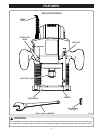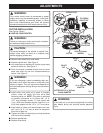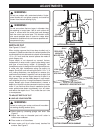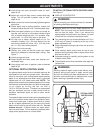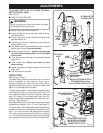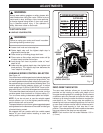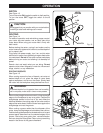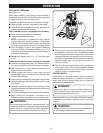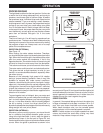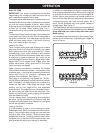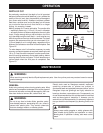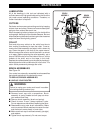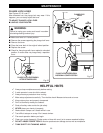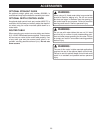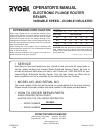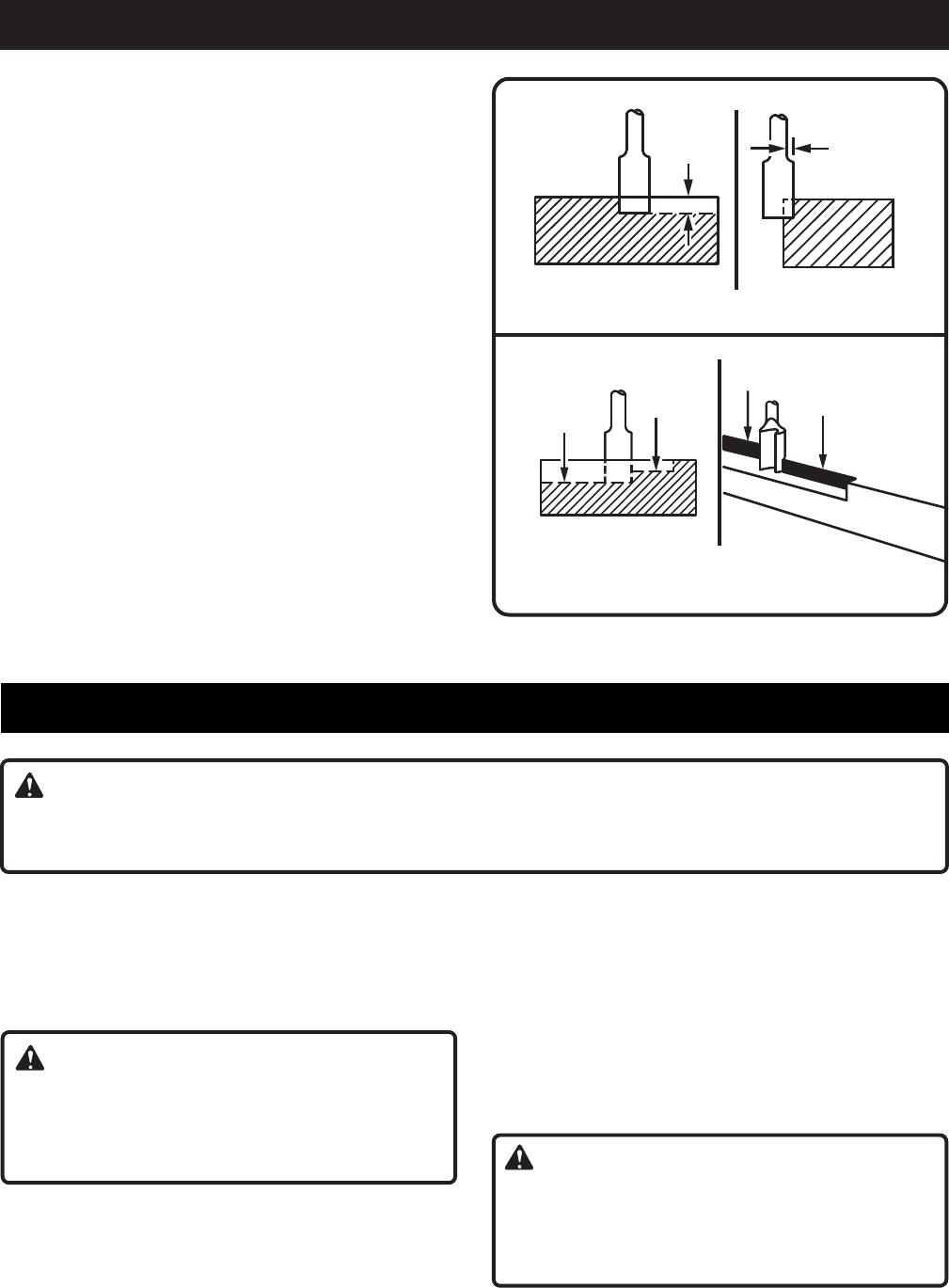
20
OPERATION
DEPTH OF CUT
As previously mentioned, the depth of cut is important
because it affects the rate of feed that, in turn, affects the
quality of the cut (and, also, the possibility of damage to
your router motor and bit). A deep cut requires a slower
feed than a shallow one, and a too deep cut will cause
you to slow the feed so much that the bit is no longer
cutting, it is scraping, instead.
Making a deep cut is never advisable. The smaller bits
— especially those only 1/16 inch (1.6 mm) in diameter
— are easily broken off when subjected to too much side
thrust. A large enough bit may not be broken, but if the
cut is too deep a rough cut will result — and it may be very
difficult to guide and control the bit as desired. For these
reasons, we recommend that you do not exceed 1/8 in.
(3.2 mm) depth of cut in a single pass, regardless of the
bit size or the softness or condition of the workpiece.
See
Figure 22.
To make deeper cuts it is therefore necessary to make
as many successive passes as required, lowering the bit
1/8 in. (3.2 mm) for each new pass. In order to save time,
do all the cutting necessary at one depth setting, before
lowering the bit for the next pass. This will also assure a
uniform depth when the final pass is completed.
See
Figure 23.
Fig. 22
WIDTH
OF CUT
DEPTH
OF CUT
1ST.
PASS
2ND.
PASS
1ST.
PASS
2ND.
PASS
Fig. 23
MAINTENANCE
GENERAL
Avoid using solvents when cleaning plastic parts. Most
plastics are susceptible to damage from various types of
commercial solvents and may be damaged by their use.
Use clean cloths to remove dirt, carbon dust, etc.
WARNING:
Do not at any time let brake fluids, gasoline, petro-
leum-based products, penetrating oils, etc. come in
contact with plastic parts. They contain chemicals
that can damage, weaken, or destroy plastic.
Electric tools used on fiberglass material, wallboard,
spackling compounds, or plaster are subject to
accelerated wear and possible premature failure, as the
fiberglass chips and grindings are highly abrasive to
bearings, brushes, commutators, etc. Consequently, we
do not recommended that this tool be used for extended
work on these types of materials. If, however, you do
work with any of these materials, it is extremely important
that you clean the tool frequently by blowing it with an air
jet.
WARNING:
Always wear safety goggles or safety glasses with
side shields during power tool operation or when
blowing dust. If operation is dusty, also wear a dust
mask.
WARNING:
When servicing use only identical Ryobi replacement parts. Use of any other parts may create a hazard or cause
product damage.



